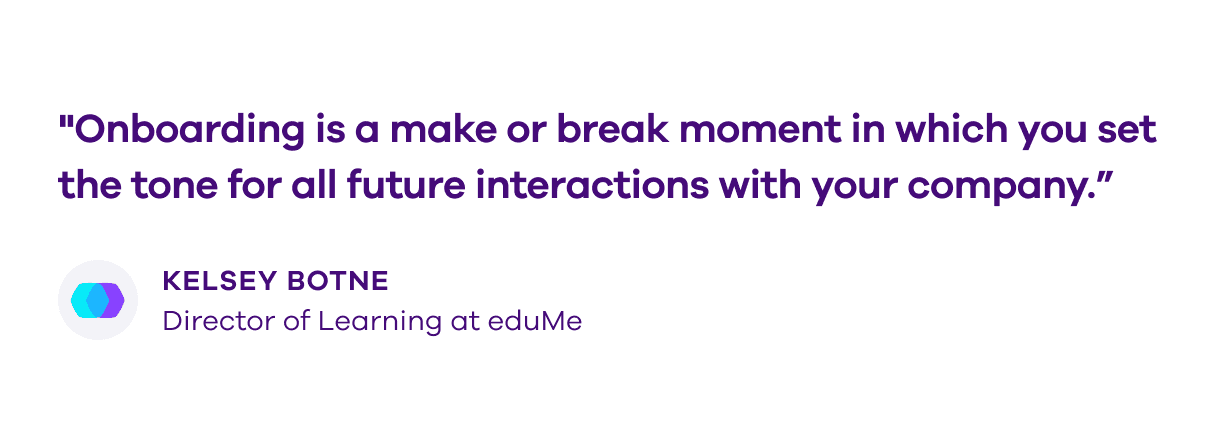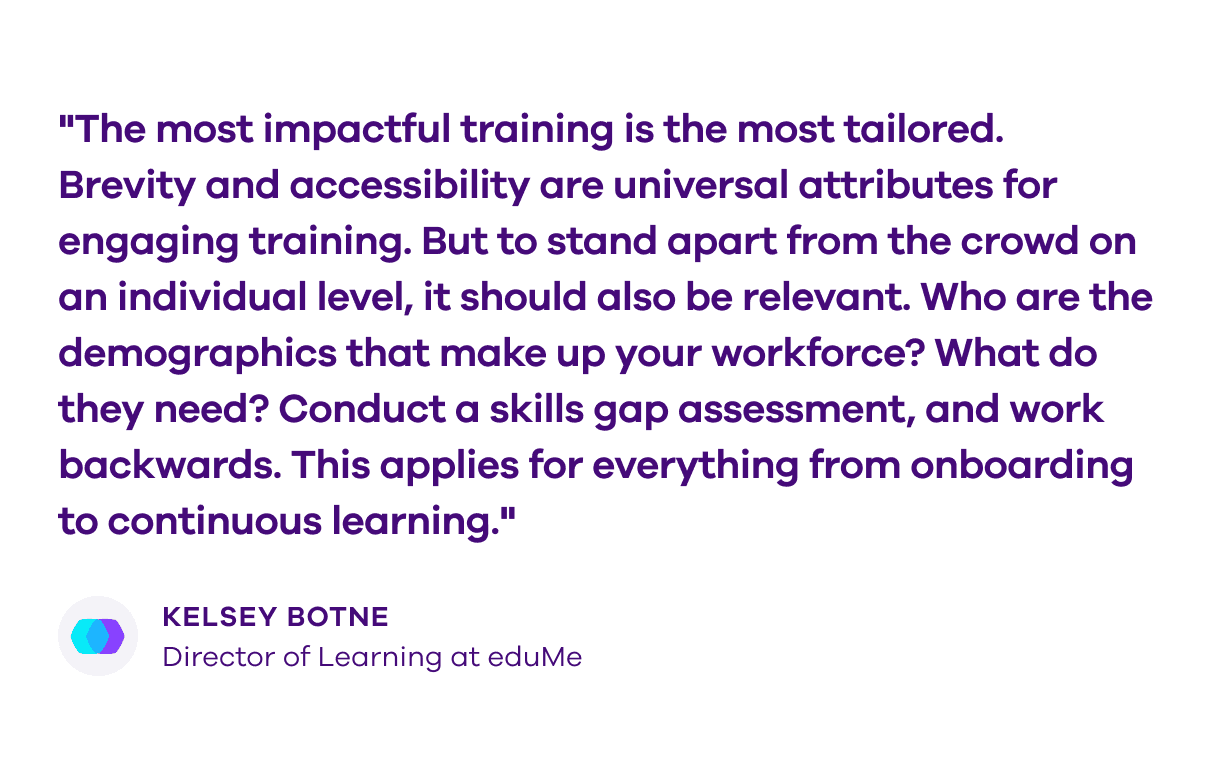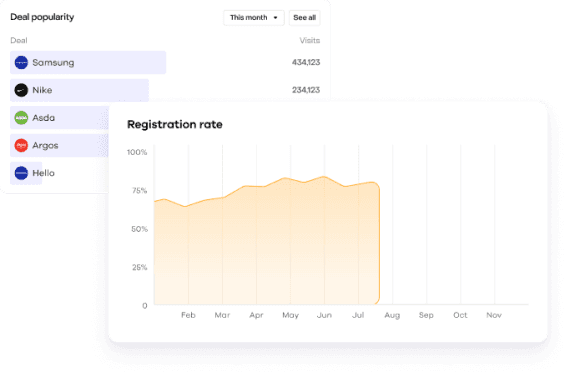Things have changed around here
We've rebranded from Collective Benefits to Onsi. This content is from before our rebrand so you may see mention of our old name.
As a business in the platform economy, you know the competition for flexible and on-demand workers is exceptionally high. That’s just the nature of things – there are tons of platforms for workers to choose from, and it’s normal for them to be going through several application processes at once.
So how do you stay competitive when applicants can easily have their heads turned before they’ve even got through training? If one thing’s certain – not all companies can afford to simply inflate pay, especially in the face of the cost of living crisis.
The answer lies in optimising the onboarding process – which provides the perfect opportunity to engage with workers from the get-go, and to make sure your platform stands way out from the crowd.
As Kelsey Botne, Director of Learning at eduMe puts it:

Read on to find out about the three pillars of a first-class onboarding programme:
Speed: Agility is key – workers want to start earning, fast.
Medium: How do you deliver onboarding? In-person, online, or in-app?
Content: What do you include in training? Understanding applicant demographics and their skills gap is vital.
Speed: is your onboarding process fast enough?
Lots of applicants will be attracted to platforms by the idea that they can start earning money quickly.
If an onboarding process takes too long, that’s a big barrier between an individual and the money they’re keen to access. In fact, research from eduMe states that 72% of flexible workers want it to be even faster.
Make sure you consider these two points:
How long does it take to get from application to earning?
Most platform economy companies have an onboarding process that takes a matter of days, but according to research from eduMe, 72% of flexible workers want this to be even faster.
How quickly can workers complete training?
We’ve seen a growing trend in companies looking to minimise the length of their training, to get their new workers onto their first job as fast as possible. One business in the staffing industry has recently brought their process down from two days to four hours.
Next – ask what you can do to reduce the time between someone applying and completing training.
It might be a matter of switching from in-person training to online training. Or significantly cutting down the amount of content delivered in training, so only essential information is covered.
Don’t forget – you can (and should) deliver training to workers throughout their career with you. It doesn’t all need to be done in one go.
Medium: how should you deliver your onboarding?
How you deliver your onboarding can have a huge impact on how effective it is.
Ultimately, the medium you choose depends on what’s right for your business and the demographic of your applicants:
In-person onboarding
You could deliver your onboarding in-person, across one or more sessions.
Good for:
Adding a personal touch and engaging with workers face-to-face
Small businesses that don’t need to onboard at scale
Jobs that involve working on-site, with a team – like in hospitality or care
Not so good for:
Keeping costs down
Larger businesses that need to scale up training
Businesses with a huge amount of workers operating in various locations – like delivery platforms
Workers that don’t want to spend time and money travelling to in-person training
Online onboarding
Platforms like Zoom, edapp, and uQualio can help you deliver live or pre-recorded online training.
Good for:
Delivering remote training
Larger businesses that need to scale up training
Connecting with workers in a personal way, remotely (specifically with live sessions)
Businesses with workers operating in various locations
Workers that don’t want to spend time and money travelling to in-person training
Not so good for:
Workers that would benefit from the interactivity of an in-person setting
Tailoring training to individual workers
Businesses that aren’t equipped with the funds or technology needed to carry out training online
Mobile onboarding
If your platform has an app, delivering training through this could streamline the on-boarding process and keep things short and to-the-point for workers.
Even if you don’t have an app, platforms like eduMe can help you deliver mobile on-boarding, where workers can manage everything through their phones.
Good for:
Total flexibility – workers can train on-the-go
Tech-savvy workers that expect to be able to manage everything through their phones
Tailoring training to individual workers
Businesses that need to deliver training on a massive scale – to hundreds or thousands of workers across various locations
Not so good for:
Workers that would benefit from the interactivity of an in-person setting
Workers that aren’t comfortable using smartphone / in-app technology
A quick note on gamification
Mobile onboarding also gives you the chance to play around with gamification in training. One major food delivery platform, for example, delivers training in 1-2 minute videos, with a 1 or 2 question quiz after each round.
Gamification can make training more fun and increase learner engagement – check out Xperiencify to get started; a platform designed specifically for gamified training.
Content: what should your training include?
We asked our friends at eduMe, the flexible worker training experts, to share their advice – here’s what Kelsey has to say about the content of training:

And here’s a round-up of eduMe’s top training tips! 💪👇
Understand your audience
It’s crucial to really dig deep into what your audience needs, and what is likely to work well for them. Always start by asking these questions:
What are their knowledge gaps?
What motivates them?
What device do they use and which apps do they spend their time on?
What will they hope to achieve from training?
How can you simplify processes for them?
What messaging will they respond to most?
Use training to sell your company and the value of the training itself
Use your mission and vision to inform the way you communicate through training – this is a great way to differentiate yourself. And always state the value of your training upfront to get end user buy-in; what should they hope to learn? What will they gain by completing this?
Think carefully about how and when you deliver training
It’s really important to deliver your training in a way that will resonate well with your workers. Think about all the different mediums you could make use of, like in-app, email, and even SMS, and consider asking workers directly which they prefer.
It’s also a good idea to set ongoing training up around triggers. For example, a prompt for training could be given when a worker clicks into a certain area on your app, receives negative feedback, or completes 100 jobs.
Keep things concise, engaging, and always plan ahead
Start delivering content before a worker’s first day, and make sure training is super concise and easy to get through. Each lesson should be no more than five minutes. Using video to deliver training is a really effective way of keeping content engaging and digestible.
Test, recap, and seek feedback
All training should include knowledge tests throughout – it’s the only way to consolidate learnings. It’s also a good idea to recap key learnings regularly throughout sessions. Finally, seek feedback from workers about training so you can continuously improve it.
The onboarding process: final thoughts
Onboarding should be a concise and engaging process – delivered in a way that makes sense for your workers. Speed is key; workers want to get earning quickly, so might be put off by long-winded training that takes forever to get through.
On-boarding also provides the perfect opportunity for you to sell your company as a great place to work – try to get as much of your mission and values across as possible.
Finally, remember there’s also the option to pay workers to complete training. Not only does this set a great tone from the get-go, it acts as a tangible incentive for workers to invest the time needed to onboard with your platform.
Want to learn more about recruiting flexible workers? Start with our guide to reducing applicant drop-off rates with a killer applicant comms strategy.
And to find out about eduMe’s mobile training for deskless workers, head here.




